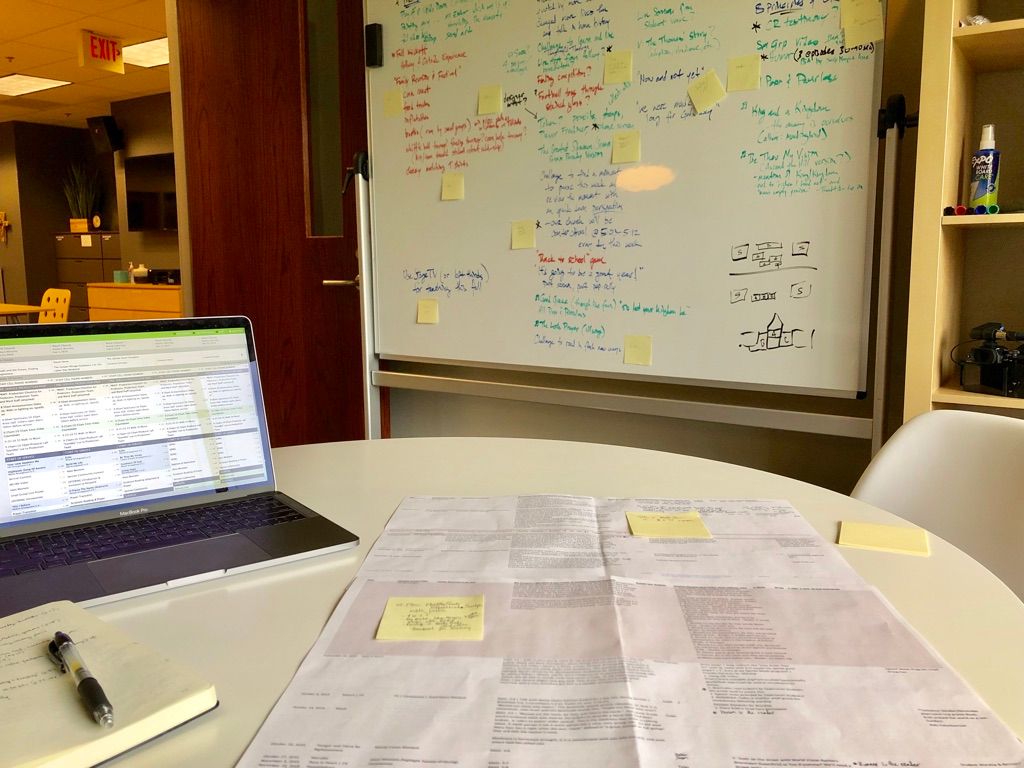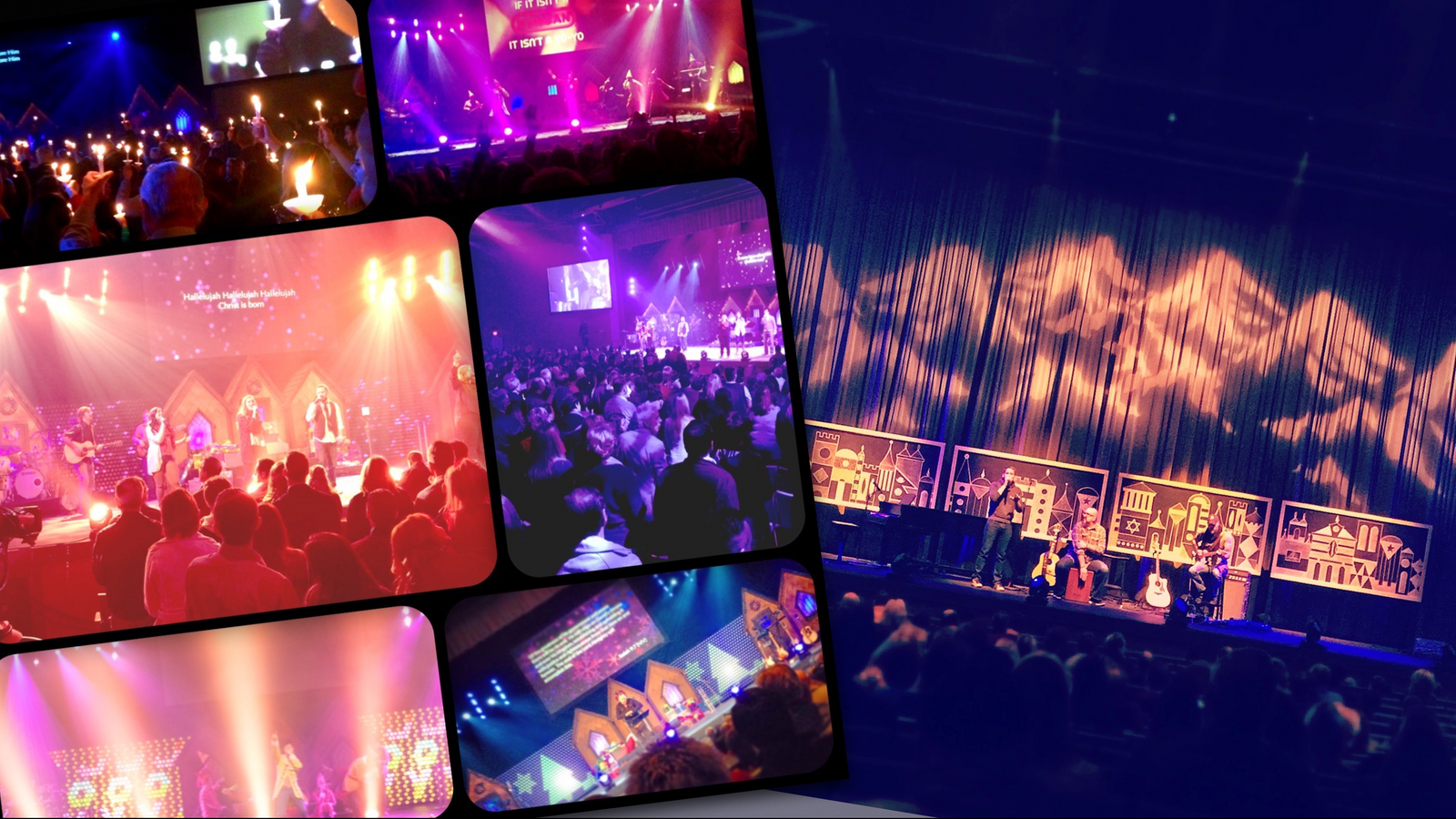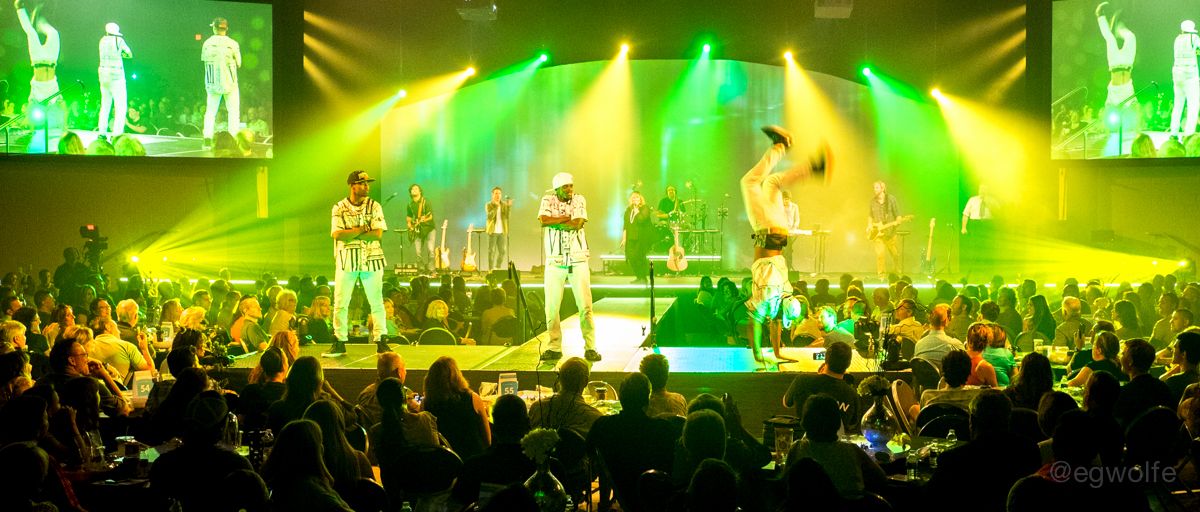
As the Creative Director, I’m responsible for leading us in the tactical now, the strategic near, and the vision of what we’re steering toward.
Now - Every weekend we have another event! I’m responsible for everything that is presented in each of our 3 venues.
- I directly lead the Worship Directors to lead the art and presentation in each of their venues.
- I lead the Production Department to support and enhance the art and communication with excellence - not only for the live experience, but also the broadcast audience web streaming and listening to radio.
- I am coaching the hosts and teachers in navigating transitions and delivering their content with authenticity, tone, and clarity.
- We’re always iterating and we’ll make any audible to the plan necessary to better tell the story and inspire life.
Near - We have Production Meetings every Monday. We break the meeting into three parts:
- 3-Weeks-Out - PCO (our online production order and scheduling tool) 60% - The production order is mapped out with at least placeholder elements ("Song 3" or "Focus") in place to estimate timing of the day. Casting roles band/vocal positions are slotted.
- 2-Weeks-Out - 85% - Order is filled in with specific song names and intended feel of moment in Producer column. Casting of band/vocalists is scheduled.
- Week-Of - 95% - Order is detailed with who is leading each moment and talking points are outlined. Arrangements for every song is uploaded with accurate detail of what will be rehearsed. (If a change is realized during rehearsal; that’s totally fine, but we communicate any alterations by noon on Thursday) Musician backline support requests are fully detailed with what they want from Ward and what they’re brining.
Far - In the winter and spring, we begin mapping out the following year.
- We try to maintain a road-map that is over a year in advance. I have created a master document for every event (weekends and special event) that happens in our main venues.
- By 12-weeks-out, I work with the lead teacher for each event to write a paragraph of vision for the narrative of the experience, the angle of the teaching, and the hope for response. I’m also working with our Executive Staff and key Directors to make sure that we know any necessary elements, promotions, or calendar notes that must be factored in to the planning.
- I have lead us to be 12-weeks-out in that "treatment" that we can plan from. I lead our team in a meeting where we look at each sermon series and we brainstorm ideas we might plan. We fill up the whiteboard with ideas, sketches, stickie notes, and optimism.
- I followup with our Worship Directors and Lead Teacher and we hone in on what we want to develop. Storyboarding, writing, "braintrusting", re-writing, producing, designing, ordering, shooting, editing, prototyping, etc.



 A number of years back, I was asked to design a stand to support the new system for parents to use to check their kids in. Design requirements:
A number of years back, I was asked to design a stand to support the new system for parents to use to check their kids in. Design requirements:


 Fun too, to coach blocking for a the broadcast into during the countdown. My friend snapped this photo of yours truly that he used to coach the crew in duplicating the shot composition.
Fun too, to coach blocking for a the broadcast into during the countdown. My friend snapped this photo of yours truly that he used to coach the crew in duplicating the shot composition.




